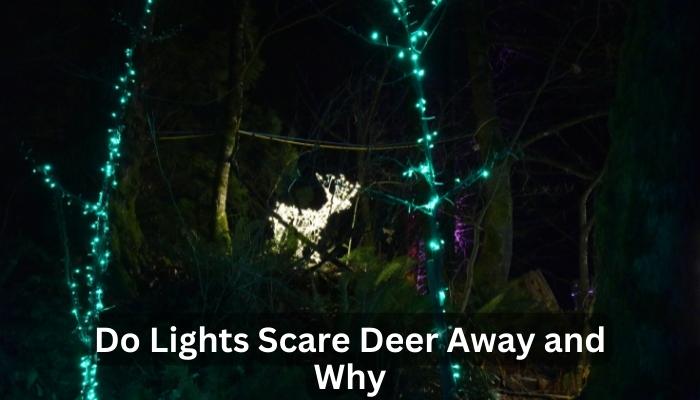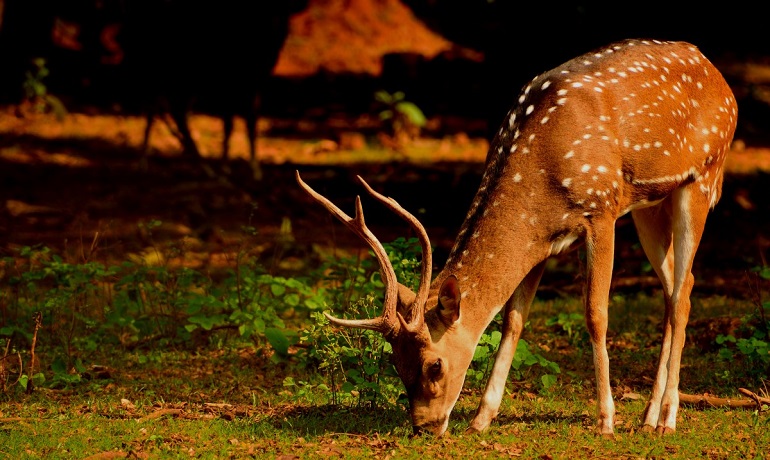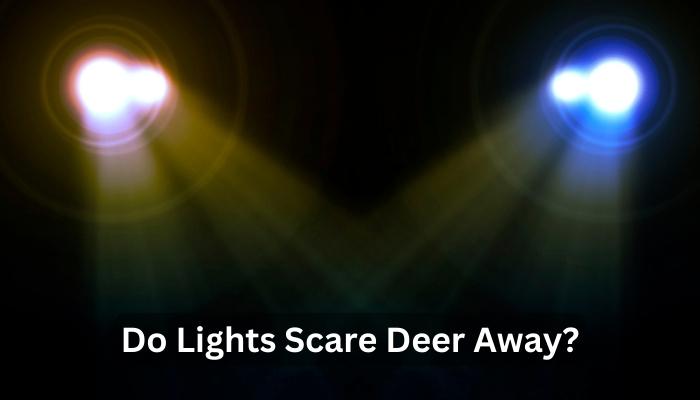Yes, lights can scare deer away. In fact, lights are often used as a deterrent to keep deer out of certain areas.
Lights can be an effective way to scare deer away, keeping them out of specific areas where they may cause damage or pose a risk. While deer are generally nocturnal animals, they can be attracted to well-lit areas, such as gardens, yards, or farmland.
This can lead to issues like crop damage or unwanted grazing. Therefore, utilizing lights is a commonly employed method to deter deer from these spaces and prevent potential problems. We will explore the effectiveness of lights in scaring deer away and discuss different types of lights that can be used for this purpose. By understanding how lights can repel deer, you can effectively protect your property from these unwanted visitors.
Contents
Deer Reaction To Lights

Deer have a natural sensitivity to light, making them easily startled by sudden beams or flashes. Their survival instincts kick in when they perceive an unexpected source of light, causing them to react swiftly. This reaction includes freezing in place, darting away, or even leaping in the opposite direction.
The reason behind this behaviour lies in their evolutionary adaptation to rely on light as a signal for potential threats. When a bright light is detected, their immediate response is to assume danger and seek safety. While different deer species may have varying degrees of sensitivity, it is generally advised to avoid shining lights directly at them to prevent any unnecessary stress or harm.
By understanding their natural reaction to lights, we can better coexist with these majestic creatures and ensure their safety in their natural habitat.
Natural Factors Affecting Deer Behavior

Deer behaviour is influenced by various natural factors, including their nocturnal nature, adaptation to darkness, and poor eyesight. Being primarily nocturnal, deer are most active during the early morning and late evening hours when visibility is low. This behaviour allows them to avoid predators and find food more efficiently.
Additionally, deer have adapted to darkness by having larger pupils that allow more light into their eyes. This adaptation helps them see better in low-light conditions. However, their eyesight is not their strongest sense, and they rely more on their heightened sense of hearing and sense of smell to detect potential danger.
Despite popular belief, lights do not necessarily scare deer away, but they may startle them initially before they become accustomed to the light source.
Understanding Deer Sight

Deer have limited colour perception but excellent motion detection and wide-ranging peripheral vision. Their vision allows them to detect movement within their surroundings easily. Light scares away deer as they are sensitive to sudden changes in their environment. Artificial lights, especially bright ones, can startle them and cause them to retreat or avoid certain areas altogether.
When it comes to deer, it’s important to understand their sight capabilities in order to prevent unnecessary disturbances. By being aware of their limited colour vision and their heightened ability to detect motion, we can better understand how lights may impact their behaviour.
By taking measures to minimize bright lights or using motion-activated lights, we can help create a more peaceful coexistence with deer and mitigate any potential disturbance caused by lights.
Effects Of Artificial Lights
Artificial lights have a significant impact on deer, possibly attracting them rather than scaring them away. These lights can startle deer, causing them to exhibit unpredictable behaviour. Additionally, bright lights can disrupt their feeding patterns, leading to changes in their natural habits.
Instead of deterring deer, some sources suggest that lights can inadvertently make areas more appealing to them. These lights should be used cautiously, especially in areas where deer populations may be a concern. Maintaining a balanced approach is crucial, considering the potential implications of artificial lights on wildlife behaviour.
By understanding the effects of lights on deer, it becomes possible to develop strategies that minimize disruption to their natural patterns and promote their overall well-being in coexistence with human settlements. The goal should be to strike a harmonious balance between human needs and the preservation of wildlife habitats.
Types Of Lights

Deer tend to react differently to different types of lights. Incandescent bulbs, for instance, may not scare them away as much as LED lights or solar-powered lights. This is because incandescent bulbs emit a warm yellow light that deer are more accustomed to.
On the other hand, LED lights emit a bright white light, which can startle and scare deer away. Solar-powered lights, though eco-friendly, may not provide enough brightness to effectively deter deer. It is important to consider the purpose of using lights to scare deer away and choose the most suitable type based on their reaction.
Ultimately, the goal is to create a safe and comfortable environment for both humans and wildlife, while minimizing potential damage to plants and property.
Research Studies On Light And Deer
Research studies have delved into the effect of light on scaring away deer. Scholarly articles, field observations, and expert opinions shed light on this topic. These sources provide valuable insights into the behaviour of deer in the presence of different types of light.
Research findings suggest that certain types of lights, such as high-intensity and motion-activated lights, can deter deer. However, it is important to note that the effectiveness of lights in deterring deer may vary depending on various factors, such as the proximity of the light source to the deer’s habitat and the quality of the light emitted.
While some studies have shown positive results, further research is still needed to fully understand the impact of lights on deer behaviour. Overall, it is clear that lights have the potential to scare away deer, but more research is needed for conclusive evidence.
Frequently Asked Questions For Do Lights Scare Deer Away
Will Lights Keep Deer Away At Night?
Yes, lights can keep deer away at night by disturbing their natural environment and deterring them.
What Scares Deer Away At Night?
Bright lights and loud noises scare deer away at night.
What Do Deer Hate The Most?
Deer hates the smell of strong scents like garlic, spicy peppers, and human hair.
Will Garden Lights Keep Deer Away?
Garden lights aren’t proven to deter deer, but they can help improve visibility and deter other pests.
Conclusion
To sum up, it is clear that lights can be an effective deterrent for deer. The use of motion-activated lights, in particular, can startle deer and steer them away from your property. Additionally, bright lights can improve visibility for drivers, reducing the risk of accidents involving deer.
However, it is important to consider the potential drawbacks of using lights to scare deer away. Some studies suggest that deer can become habituated to lights over time, diminishing their effectiveness as a deterrent. It is also crucial to ensure that the lights you use comply with local regulations and do not cause unnecessary light pollution.
Ultimately, combining lights with other deer deterrent strategies, such as fencing or repellents, may yield the best results. By understanding the behavior of deer and employing a multi-faceted approach, you can successfully protect your property from deer damage.

